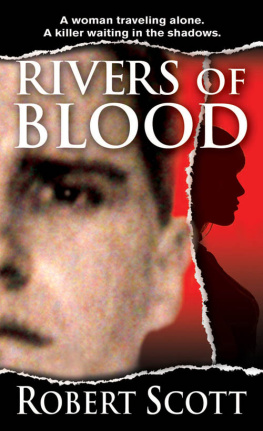E PILOGUE
There were four cases, in particular, that would have widely different outcomes by the year 2008. Two would lead directly away from Dale Eaton to other killers and surprising conclusions, while the other two would come full circle right back, pointing toward Eaton as the murderer. The first case was one of the Great Basin Murders, in which Eaton had remained a suspect for so long because of his journeys into that region, and the things he had told people while living there.
As former FBI agent and profiler Greg Cooper had noted, three out of ten unsolved Great Basin murders seemed to have been committed by the same perpetrator. The female victims had been shot in the head and then possibly posed in isolated areas in the form of a cross. Cooper used his years as an FBI profiler to look at these crimes, including an initial three-step criteria:
The steps taken to ensure the success of the crime.
Steps to help protect the identity of the killer.
Steps to help effect the killers escape.
Cooper then utilized more steps to filter the profiling, starting with victimology. This concerned the lifestyle of the victim, where they lived, shopped, and did recreational activities, which could include everything from hiking to going to bars. He wanted to know the possibility that the victim and killer knew each other. If a victim was abducted and killed in an isolated area, that tended to point more to death by stranger. If she was killed in the relative safety of her residence, the first people who had to be looked at were husband, boyfriend, or people with whom she was close.
Cooper looked at the possible initial contact site, if that could be discerned. Was this a place where the victim had a routine, or a onetime visit to the area? And as to the actual murder site, the five W s had to be asked: who, what, when, why, and where. If the disposal site was different than the murder site, what made the disposal site attractive to the killer? Did the site help the killer escape, or was it a place where the victim had been dumped as quickly as possible?
Physical injuries to the victim were important. It made a difference if the victim was shot at a medium distance or short distance. Even more personalized were stab wounds, especially if they were inflicted upon the face, breasts, or genital area. And did the killer stab more often than was necessary to kill the victim? Was it, in essence, overkill, a sign of a rage killing that might be personally aimed at the particular victim or females, in general?
If there was a sexual assault, was it vaginal, anal, or oral, or was it a combination of those factors? Was a foreign object involved, and did the perpetrator ejaculate on or in the victim? Was sexual torture involved?
Then there was the category of the killer acting in an organized or disorganized manner. An organized killer would make attempts to cover up his identity and hide the body. A disorganized killer would leave the body where it lay, and do very little to hide what he had done. Cooper noted that in the two types of individuals, an organized killer would generally carry out organized activity in his everyday life. This type tended to keep a neat work area and residence, whereas the disorganized killer was sloppy and had a messy residence.
The risk level of the victim had to be taken into account. Was the victim a prostitute, alcoholic, drug user, or hitchhiker? This elevated their risks. This had to be looked at with caution, however. Lisa Kimmell had only elevated her risk level by driving on a lonely road at night, a road she did not know well. Otherwise, she led a relatively risk-free life.
While Greg Cooper initially thought there might be a link between Lisa Kimmells murder and the three other Great Basin murders he studied, the more he researched the case, the further he backed off from that theory. Even though Dale Wayne Eaton was in the area of the murder victim in Millard County, Utah, around the time she died, it was Coopers investigation into aspects of that crime that led him to a startlingly different conclusion. He began to surmise that the female in Millard County was the victim of another wanderer, not unlike Dale Eaton, who just happened to be one of Americas most prolific serial killersRobert Ben Rhoades. Cooper eventually related the information he had gathered to the sheriff of Millard County, and it led to some very surprising revelations.
Robert Ben Rhoades was a professional long-haul truck driver in the 1980s. Rhoades drove all over the United States, and basically eluded notice by law enforcement because of all the jurisdictions he passed through. It wasnt even detected until an incident in Arizona in April 1990 that womens bodies started showing up along the routes he drove. On that date, Arizona Highway Patrol officer Mike Miller noticed a big rig parked on the shoulder of Interstate 10. Thinking the truck driver might have broken down and needed assistance, Miller pulled his cruiser over and walked toward the truck. As he approached the truck, Miller was stunned when he looked into the cabs window and saw a nude female tied up with restraints in the sleeper part of the cab. The trooper also discovered the truck driver there, a man who was identified as Robert Ben Rhoades.
Rhoades tried talking his way out of the situation by saying that the woman who was bound was consensual about the situation. It was just their way of having kinky sex, he said. Patrolman Miller didnt buy it, and soon discovered a loaded .25-caliber automatic pistol. Trooper Miller handcuffed Rhoades and placed him in the police cruiser, but little did he know that Rhoades had a handcuff key and almost escaped. Miller was able to recapture Rhoades, restrain him again, and waited with him until backup arrived.
When other officers arrived, the nude female was rescued and she turned out to be Lisa Pennal. Her English was not good, but she managed to convey that she had accepted a ride with Rhoades at a coffee shop. Pennal said that she had later fallen asleep in the sleeper area of the cab, only to wake up with her wrists and ankles tied in restraints. Rhoades then proceeded to undress her, whipped her, attached spring-type clips to her nipples and vagina, and sexually tortured her.
While in custody, Rhoades still tried to claim that the situation with Pennal had been consensual, but his story began to break down as more and more of her statements jibed with the pornographic and sexual assault items found in his truck. When Rhoadess home in Houston, Texas, was searched, the officers found handcuffs, spring-type clips, a dildo, and various items of womens clothing. He also had photographs of young white females in various poses while they were nude and seminude.


















